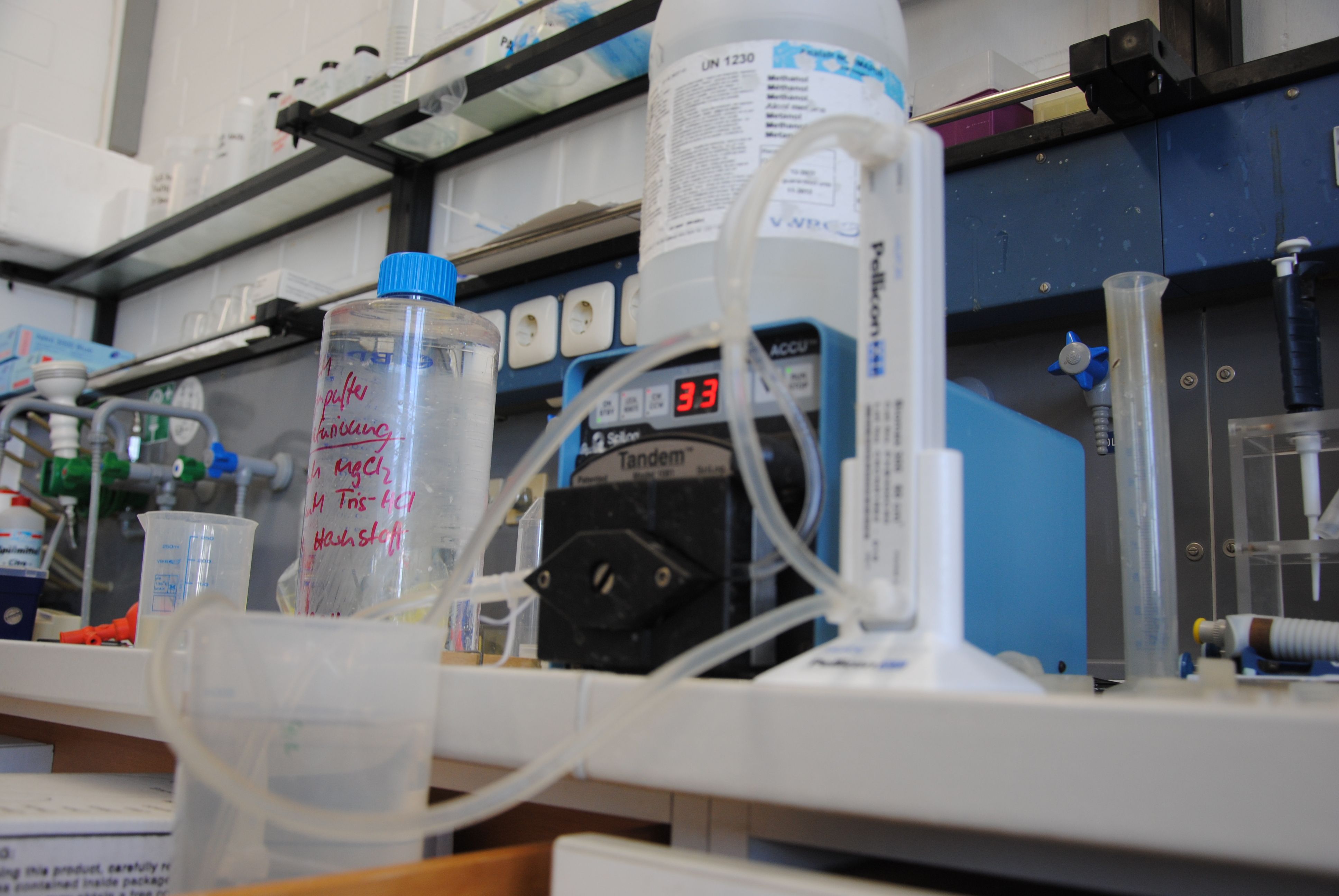Team:Bielefeld-Germany/Results/S-Layer/Guide/5
From 2011.igem.org
(Difference between revisions)
| (One intermediate revision not shown) | |||
| Line 1: | Line 1: | ||
{{Bielefeld_2011_Header}} | {{Bielefeld_2011_Header}} | ||
| - | + | <html><img src="https://static.igem.org/mediawiki/2011/2/28/Bielefeld-header-guide.png"/><p></p></html> | |
=Filtration of the cell lysate= | =Filtration of the cell lysate= | ||
| - | [[Image:IGEM-Bielefeld2011-Pump.JPG|400px|thumb| | + | [[Image:IGEM-Bielefeld2011-Pump.JPG|400px|thumb|right|A Milipore Pellicon XL 300 membrane actuated with a SciLog TANDEM 1081 peristaltic pump.]] |
Centrifugation does not remove all of the cell debris, therefore a tangential flow ultrafiltration step with a 300 kDa membrane is performed. The retentate is collected. Instead of this device you can also use a simple dead-end sterile filter (0.22 µm poresize) but it is easier the way described above (the dead-end filter gets clogged after some time...). | Centrifugation does not remove all of the cell debris, therefore a tangential flow ultrafiltration step with a 300 kDa membrane is performed. The retentate is collected. Instead of this device you can also use a simple dead-end sterile filter (0.22 µm poresize) but it is easier the way described above (the dead-end filter gets clogged after some time...). | ||
Latest revision as of 02:47, 29 October 2011


Filtration of the cell lysate
Centrifugation does not remove all of the cell debris, therefore a tangential flow ultrafiltration step with a 300 kDa membrane is performed. The retentate is collected. Instead of this device you can also use a simple dead-end sterile filter (0.22 µm poresize) but it is easier the way described above (the dead-end filter gets clogged after some time...).
With the cleared lysate the histidine affinity tag comes into play - want to know how?

 "
"

